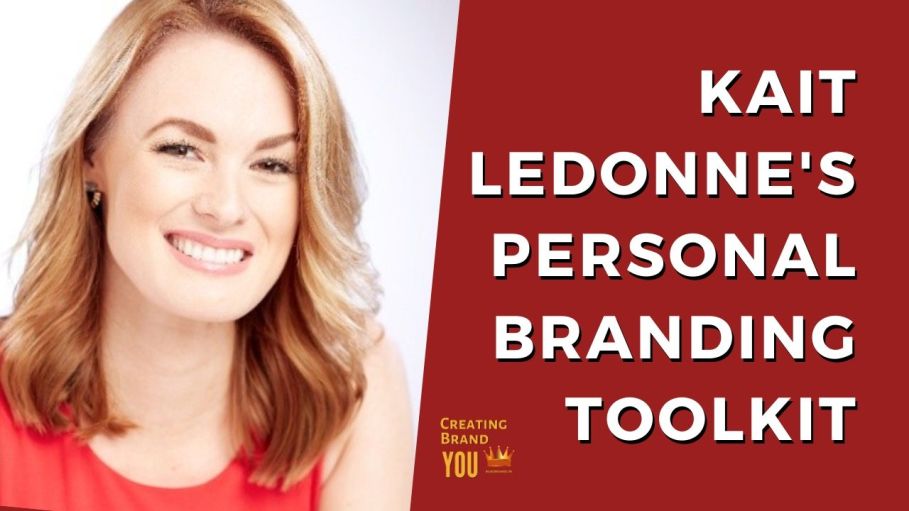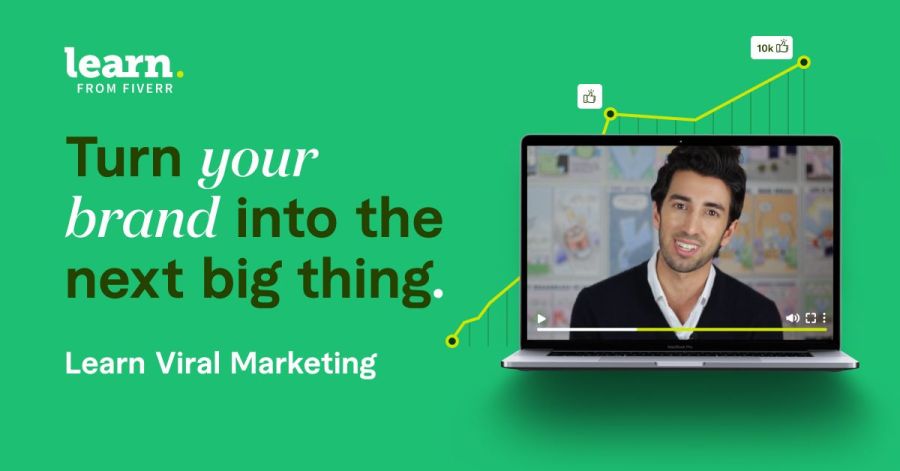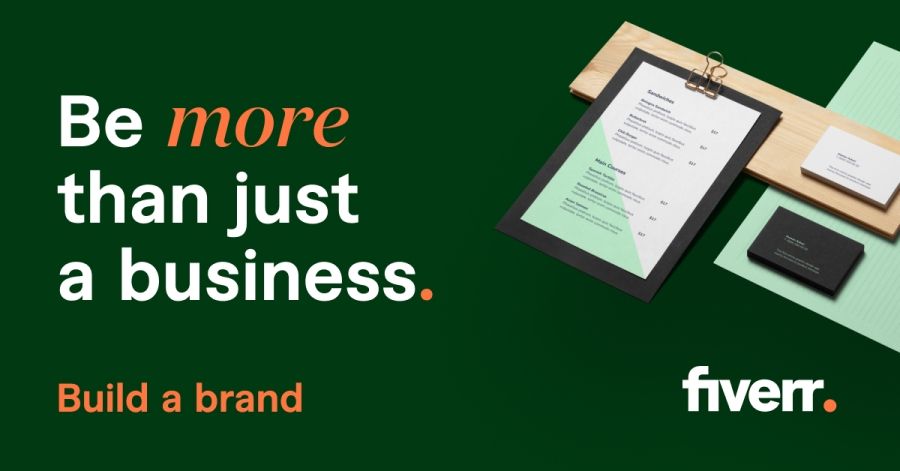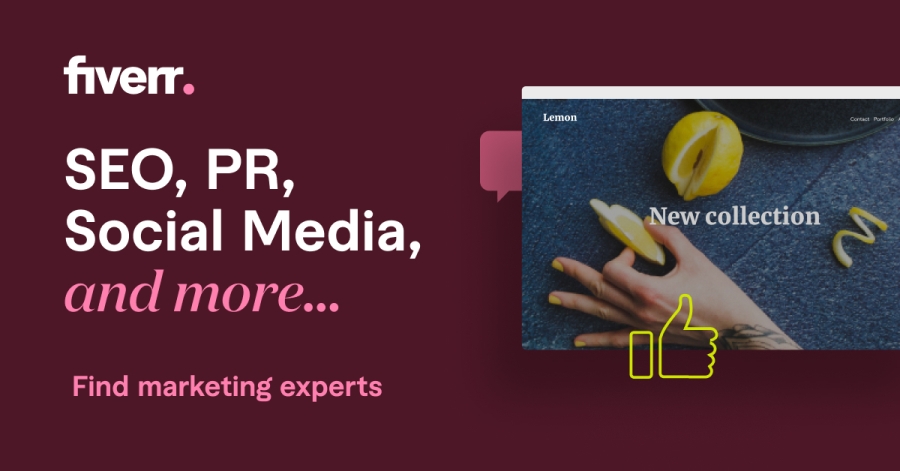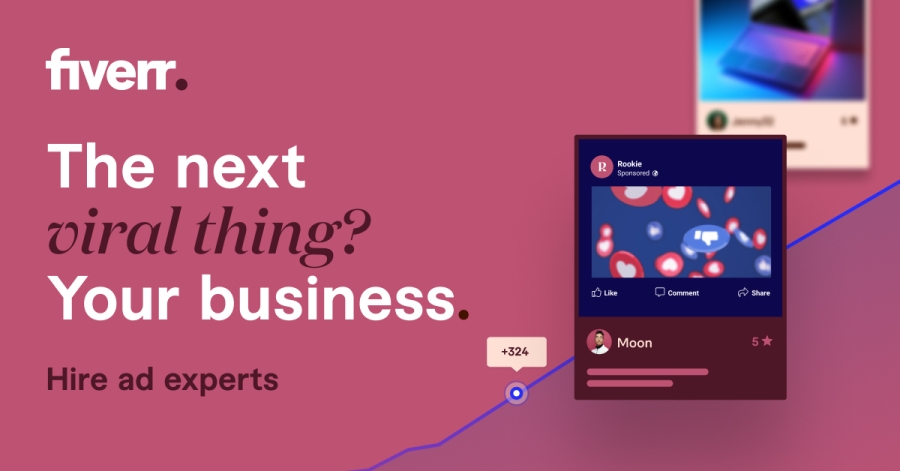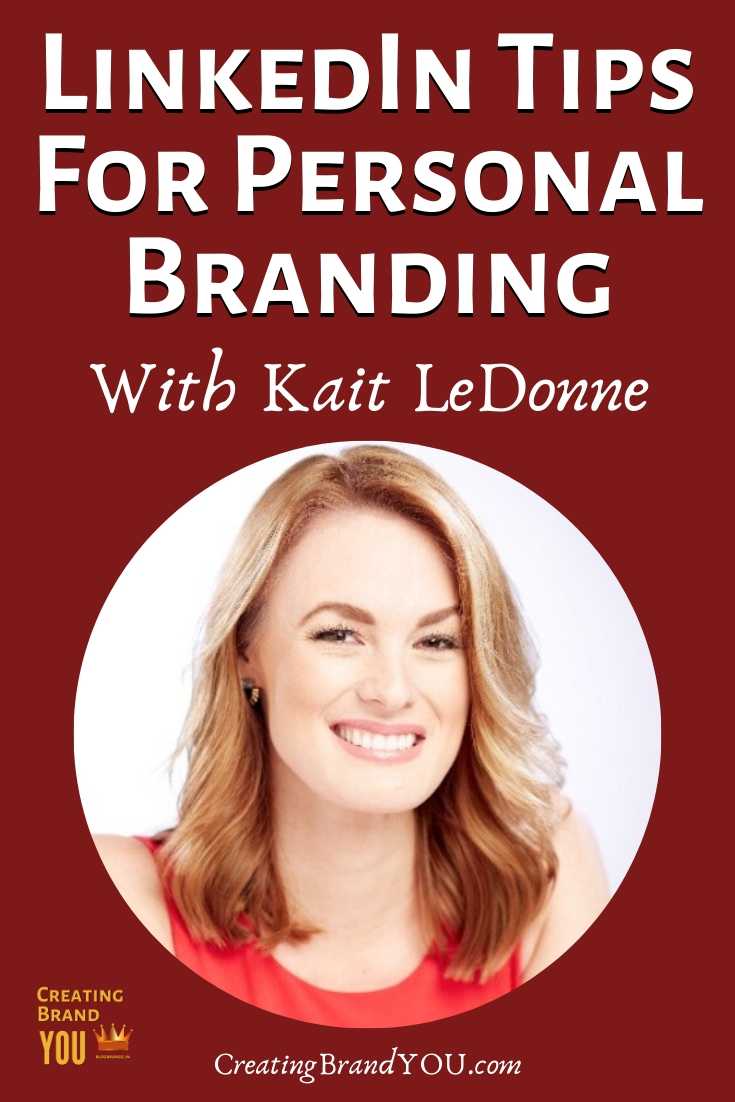What is a personal branding toolkit and why is LinkedIn important for personal branding? Learn how to brand yourself on LinkedIn and boost your LinkedIn profile views in this interview with LinkedIn profile specialist, Kait LeDonne.
Kait is the Founder and CEO of LeDonne Branding & Marketing and specializes in working with B2B businesses and consultants to clarify their message, refine their image, and attract the right kind of customers using social media strategies that hyper-accelerated brand awareness and amplify credibility.
In this interview, you’ll learn why LinkedIn is such a great professional branding platform, why you need a personal brand statement for yourself, and get LinkedIn profile tips for developing your personal brand.
Kait’s LinkedIn personal branding tips will show you how to build a personal brand on LinkedIn and build a personal branding toolkit to help your personal brand profile stand out.
Learn LinkedIn profile development tips using LinkedIn brand assets like your professional LinkedIn photo and LinkedIn personal profile.
Kait hosts a weekly marketing and branding show and has authored the eBook, The Attraction Magnet, which helps businesses implement key branding methodology to expand their reach and presence.
She works with local, regional, national, and international firms and has been a contributor on television and in national news publications.
If you need help with your LinkedIn profile and are wondering how to make your LinkedIn profile stand out, connect with Kait for more LinkedIn branding tips.
Resources mentioned in the interview:
Contents
Kait LeDonne’s Personal Branding Toolkit And LinkedIn Branding Tips
Priya Florence Shah:
Today I’m interviewing Kait LeDonne. She’s the Founder and CEO of LeDonne Branding & Marketing which specializes in working with B2B businesses and consultants to clarify their message, refine their image, and attract the right kind of customers using social media strategies that hyper accelerate brand awareness and amplify credibility.
Kait hosts a weekly marketing and branding show and has authored the eBook The Attraction Magnet, which helps businesses implement key branding methodology to expand their reach and presence.
She works with local, regional, national, and international firms and has been a contributor on television and in national news publications.
So you have a really impressive profile, Kait. So, tell me a little bit about your brand, your business, and your personal branding tips. Let’s get started.
Kait LeDonne:
Well, I founded my brand consultancy about five years ago in Baltimore, Maryland. And it was just me and I was working with relatively smaller businesses. These would be restaurants or jewelry companies, or small, smaller family-owned businesses.
And I came from a corporate world where we were consistently acquiring brands and scaling them to a national capacity. So I looked at some of these smaller local businesses and thought if they just knew some of these core tenets of branding, they would grow so much faster, and be so well positioned for growth than they are now.
So I started to work with these firms. And I think two things happened that kind of shifted me into personal branding. One was that, so often we saw these brands would grow because we started to put the Founders front and center of the brand.
And I think that especially working with family-owned businesses, it was important to put their founders on a pedestal because people wanted to buy into the story and watch their growth with them.
So that was kind of tenet number one that started to tip in the favour of personal branding. And then the second was my own journey. I had quit corporate America, went to grow this brand consultancy by myself. And I was doing a lot of shaking hands and going to networking events in Baltimore.
But my business wasn’t scaling as fast as I wanted it to. So I took to LinkedIn and started to document my journey, growing my business and growing my own brand. And before I knew it, I had international clients that were backed by venture capital or private equity. And were making their way into pretty sizable incubators out in Silicon Valley.
So I had this aha moment of, “Oh, LinkedIn is really going to deliver for me,” and there is a way that again if you bring in core tenants of branding on this platform, your business and your personal brand can scale quicker than it would on any other social media platform.
And I think LinkedIn specifically tees you up to be an authority figure, to be an expert. And it has an audience of Fortune 500 decision-makers that will give you that credibility faster than any other social media platform we found.
So we actually started to pivot the company from working with brands of products and services to really illuminating executives and founders and their personal brands on LinkedIn.
And we started a course about it and all of a sudden, our students were getting phenomenal size projects. They were being mentioned in the media, and they were being featured as speakers on apps and different platforms.
So that’s a little bit of a nutshell of how we started from a one-person, brand consultant, only five years ago in Baltimore, Maryland, to now a full-fledged branding agency that’s based out of New York. And I owe so much of that to personal branding and LinkedIn. And now it’s something that we really look to get back to others and teach them about.
Priya Florence Shah:
Yeah, absolutely. I totally agree that LinkedIn is brilliant, especially for organic traffic right now in 2020. Because others, other platforms are not giving you the kind of reach and the organic reach has decreased tremendously on other platforms. And LinkedIn also has the right audience because if you’re a B2B marketer, that’s where you want to be.
Kait LeDonne:
Yes, absolutely. And the budgets are so sizable there. I’ve noticed that conversion rates go up when you’re having a prospect conversation on LinkedIn, versus something like Facebook, Twitter, Instagram, where just by virtue of the audience that is on those platforms, I think you’re encountering more individuals that might be right for an online course.
Maybe their budget is 1500 to 3000. But they’re not going to provide you with those retainers of a couple of grand a month that will really help sustain cash flow in your business, I bet is really only going to come from LinkedIn. I’m not going to say it’s not going to come from other places, but it comes much faster. And with much more, I just think, credibility on LinkedIn.
Priya Florence Shah:
Absolutely. And I think that one of the reasons is because of the reasons people go on LinkedIn. On Facebook, people are there mostly for entertainment, for family, and for friends. So they’re not really looking to spend big budgets, you know and in terms of getting clients and stuff.
But on LinkedIn, you’re actually looking to connect with clients, you’re looking to connect with business partners, potential partners. So people are there for business and I think that makes a whole lot of difference. As opposed to the intent on Facebook and the intent on LinkedIn.
Kait LeDonne:
Yes, definitely. And I know we were planning on talking about that today. The intention when it comes to LinkedIn is everything because we talked to several people who say, you know, I posted, I posted on LinkedIn. But I feel like I’m shouting into a void.
And we’re here to tell people, it’s not just the fact that you’re posting on the platform. It’s what is the intention of value that you’re delivering. And I think that fundamentally, you always need to start with your key client in mind.
So a lot of people come on LinkedIn because LinkedIn sets you up in this way to talk about themselves. And so often when we tell people and clients know LinkedIn when done well, you shouldn’t be talking about yourself.
They think, well, you guys are personal branding experts. Why in the world would you tell me not to talk about myself? But we say the first thing you want to do is get so laser-focused on who your prospect is, the pain points, and the challenges that they have.
Then you want to frame all the messaging and your profile oriented to know how do I help that prospect, and close the gap between the pain they’re feeling now and the idea of where they want to be.
But so many people are posting content about what makes them great. Their years of experience, and updates about their company. Nobody actually cares about that. A little bit of harsh truth, but nobody cares about you. Everybody is on LinkedIn for themselves.
So if you can just use that to your advantage, and you start by saying, I know that my target client is a marketing agency owner who just cannot figure out how to scale their business. And so I’m going to talk about templates for coming up with really great proposals and hiring and all the different ways that you can go about scaling.
Well, now all of a sudden, you’re delivering value on this platform and people are going to be drawn to you. But I think that that is a fundamental mistake people make on LinkedIn. They just talk about how great they are. They don’t talk about the pain points of their clients. That’s the first place.
We always have every personal brand start, whether it’s on LinkedIn or any other platform. Who do you want to reach? How do you want to help them? What are their problems? Okay, let’s start there.
So I see you doing it right because I’ve been following your profile. And I see you sharing all these articles. And you’re doing it right because you’re sharing actionable tips to help people achieve their goals, right?
When it comes to personal branding, you always have a list of things they can do so they can actually put those things into action. So I see you get a great deal of engagement and appreciation on your posts because you’re giving people what they need.
And so I think they should follow you and use that as kind of a role model or an example for what they can do with their own profiles, right?
Kait LeDonne:
Thank you. Yes. And I will say this too, for what it’s worth because we get this question a lot. People always say, “Well, if I put all my best stuff online for free, nobody’s going to hire me.”
I always tell them, and this is a true story actually, there was a family that built an entire house because they watched YouTube videos and found out how to build a house. Having said that, nobody, with the exception of maybe them is going to watch a YouTube video on how to build a house and then build a house
At the end of the day, even if they know exactly what there is to do, they will still hire a general contractor for convenience, time, and expertise. And so, I don’t care if you’re an attorney or an accountant and you’re putting all of your best advice online. That doesn’t matter.
At the end of the day, somebody is still going to hire you so they have proximity to you, and they have your convenience of helping them versus just, “Oh, you know what I read all they have to post? I’m good. I don’t need to hire this person.” That’s never going to happen.
Priya Florence Shah:
I know, that doesn’t. And besides, the people who want that information free are not your target audience anyway. Right? You’re looking for people who are willing to pay for your services. And those people will read the information that you share to build your authority and your expertise, as an expert in your field.
Kait LeDonne:
Yes, definitely. And I think that’s where packaging comes into play as well. In fact, many people, I truly believe, are sitting on online courses because they’ve created so much content, whether it’s blog posts or social media posts over the span of let’s say two to three years.
But then they think to say, “Oh, you know, I don’t have what it takes to build an online course.” And for us, we would say, “Yes, you do, you have a whole library of content.” Now it’s just a matter of packaging it in a good, digestible way that leads people consecutively from A to B, to C. It does not need to be complicated, or rocket science.
I think a lot of personal branding is how you’re packaging and positioning something. And honestly, at the end of the day, sometimes all it takes to get somebody to buy is to put a price point on that same content you are giving away for free, and people are going to value it in correlation to the price you assigned to it.
Priya Florence Shah:
Yeah, absolutely. Because when you create an online course also, you’re giving them all your information in one place as opposed to them having to go and search on your YouTube profile and your blog posts and look in all these places for your information.
And so you can put all your information in one place and people value that. It’s like writing a book. You know, I’ve taken blog posts and put them together into a book. And people value that, people download it because they’re paying for the convenience of having all that information in one place, right?
Kait LeDonne:
Yes, definitely. I couldn’t agree with you more.
Priya Florence Shah:
So tell me a little more about your personal branding toolkit.
Kait LeDonne:
I love the personal brand toolkit because I think well, first, I’d like to say this – a personal brand is something you have, by way of the things you do.
So I always start this conversation by saying it’s not like you’re going to develop your personal brand toolkit and voila, you’re done! Your personal brand is built for you, don’t have to work on it anymore.
That’s not going to be the case. But there are certain assets that when you have them in place, it’s going to raise your profile from that of maybe a hobbyist or just somebody who’s on social media to somebody who says, “Nope, I am a bonafide expert, I charge for this. I will get paid to give my opinion,” whether that’s at conferences or to prospects or whoever it is you’re trying to reach.
So for us, when we look at personal brands, we look at a few core components. Number one, you absolutely have to have a personal brand statement. I think a lot of people think that a brand statement – or what some people call an elevator pitch or unique value proposition – is solely for those individuals who either own a company or are in business development.
But we’re here to say, “No, everybody should have a personal brand statement, a personal mission statement, even if you’re inside of an organization.” In that two-sentence statement, you should absolutely be covering who it is you help, how it is you help them in the value that you bring.
Again, when done right, your personal brand is not about you, it’s about who it is that you’re trying to help. Because guess what, those are the people that are going to pay your bills and put you on stage to speak. So let’s start there.
So number one, since it’s really going to serve as your Northern Star, everything that you do should be under the context of that statement and that purpose. Once you have that set, you want to make sure that you have a personal brand page.
Now I think a lot of people hear that and think, “Oh, it needs to be a website. She’s telling me I need to develop a website.” Not necessarily the case. With LinkedIn, especially now you can develop more or less a website as your personal profile.
You just want to be addressing, in that profile again, who it is that you help, the challenges that they experience, how you help them overcome those challenges, and then, some credibility statements, whether that’s results you’ve gotten got for other clients or press appearances, anything like that. Make sure that that’s on your page.
Now more advanced personal brands and certainly more mature personal brands who have been at it for a while, we’re definitely going to suggest that minimum get yourself like a Squarespace website, get a container to hold all of the assets of your personal brand.
But, in the beginning, if you don’t have the budget, you’re just getting started, a LinkedIn profile is going to be just fine.
The other thing I love about the LinkedIn profile is it holds a lot of search engine optimization with Google. So you don’t have to worry about getting found. LinkedIn is going to do a lot of that heavy lifting for you when it comes to search and search inquiries, right?
You develop your web page or your personal profile, you definitely want to look at having an inventory of what your brand colors are, you know? Stick to two or three to create consistency, when you develop your assets.
If you’re creating Quotables or designs or little infographics, make sure your color palette is more or less consistent as you design but more equally, if not more important, make sure that you have a slew of great brand photography. And this extends beyond headshots. You really need to show your personal brand in action.
So if your personal brand is that of somebody who wants to get paid to speak, you better have pictures of yourself on stage or hosting workshops. If you’re an author, you want to have pictures of you writing or at a computer.
You want to show people what it is that you do so not just any shots, definitely brands in action shots. We always say that you’re never, never going to regret spending good money on brand photography.
I think this is the one thing that separates kind of the amateurs from the pros do you have a Good arsenal of brand photography that you’re ready to hand over, if somebody asks you to be on a podcast or if somebody asked you to speak?
So your colors and your brand photography, and then you definitely want to make sure that you have a content catalog. This is going to be inclusive of either long-form content, podcasts, videos, article writing, and then short-form content. This can be on any platform that you choose. It’s just important you’re on a platform where your audience is.
So for me, that’s going to be LinkedIn. For other people, it might be Instagram, that’s totally fine. Start with one, don’t try and tackle more than one. Every platform has its own nuances, its own etiquette, you’re going to bite off way more than you can chew.
Priya Florence Shah:
And it takes time to get familiar with each platform and its algorithms, right? And to understand what content works and how it works and how to share content, and how to build an audience on each platform.
I have a slightly different take on building your brand on the LinkedIn thing because I’ve been online since 2001 when there was Altavista and stuff like that. So, I take a platform-independent view.
And I believe in SEO and building your search engine rankings on your website as well. Because if your website comes up number one on Google that that gives you a really good impression as far as personal branding is concerned.
But in LinkedIn, I see people not really leveraging their LinkedIn profiles. Because even people who have the means or they just don’t have the time to do it. So I think just hand it over to an agency and let them do it for you.
Because when they come to your LinkedIn profile and they see it very spare and there’s very little information on it, you’re really doing yourself a disservice, I think, by not having an All-Star profile. Right?
Kait LeDonne:
Yes, definitely I couldn’t agree with you more. And I do want to underscore what you were saying about building a platform-agnostic personal brand. You’re absolutely right.
These platforms are going to wax and wane. You know, 10 years ago, Facebook was definitely a thing. It’s good if you start on one, but to your point, you want to carry that momentum off the platform. Yes.
So for us, it’s like, okay, over 11,000 followers on LinkedIn, and our 10,000, newsletter followers on LinkedIn, how can we move them off of LinkedIn into an email list that we own, because if LinkedIn shuts down tomorrow, then guess what? Oops, there goes my 20,000 followers!
Priya Florence Shah:
Yeah, exactly.
Kait LeDonne:
Definitely. Definitely that and then you’re absolutely right. I think you can have a website and you can do a lot of these things. But if you haven’t polished up that LinkedIn profile and somebody goes and looks, well then now you’re eroding your credibility because you didn’t hit it in a few different places.
And it’s not that hard to do. Just make sure your company is updated on LinkedIn. Make sure your summary section is good. Make sure you have a clean, smiling headshot. This is going to bolster credibility.
It’s something that takes 20 minutes to do but I am consistently amazed at how many large founders still don’t even have their current company or not a lot of description around what that company does.
Priya Florence Shah:
Yeah, I’m shocked at that too when I’m checking out profiles on LinkedIn, if someone’s friended me, or invited me to their profile. I’m shocked that many marketers, they know the value of marketing, yet they haven’t filled out their summary and it like you said, it takes 20 minutes to do it.
So I think that is the number one thing they should take away, and fill out their LinkedIn profile. Make it a place where people can learn about you, can learn about what you’ve been doing, and showcase your abilities and your authority.
Publish a regular blog on LinkedIn, and have regular articles going out on LinkedIn. I think that’s very important.
Kait LeDonne:
I think so too. And I think that for a while articles were a thing on LinkedIn, then they weren’t a thing. Now they’re saying again, and I can speak to this personally because I was writing a ton of articles on LinkedIn, I was getting traction, and then some of those shorter form captions started to really take hold, and they still absolutely are driving a lot of engagement on the platform.
Having said that, I recently started to write articles again, because LinkedIn has developed a pilot program for newsletter writing, and it is so fantastic. LinkedIn does the work of building a subscriber base for you.
I’m telling you, Priya, all of my new client calls came as a result of people saying, “Oh, LinkedIn emailed me and your name was on it and your newsletter was on it and this topic that you broke down felt so spot on with all the challenges I have and I would really love to engage you to help me solve that.”
So I think anybody who says articles are dead on LinkedIn is missing a huge momentum shift again on this platform as LinkedIn is throwing a lot more awareness behind bringing articles back, which is a very relevant thing.
I also have the mindset of an article reader. Not everybody is going to invest five to 10 minutes to read a long-form article, but you better believe those who do invest five to 10 minutes and reading it, it’s because they have the problem and they’re very hungry to solve it.
So you’re going to get people who are a little farther down in the funnel than the ones that are just reading short, pithy, calm, or, you know, captions that are about 1300 characters, right?
Priya Florence Shah:
Absolutely. So you can actually target your content to reach those or reach that audience right, deeper in the funnel. So let tell us a little more about your personal brand kit.
Kait LeDonne:
Yes. So we covered a bit, I think four of the big things that you want in the kit, for sure. And I think it’s important that once you have the kit together again, you just want to make sure that you are consistently creating content for that personal brand.
And the way that I advise people to do this is to figure out a system to capture their ideas. A lot of people I think, block out time on their calendar and say, this is where I’m going to create content for my personal brand.
But very rarely are you able to just sit down and download inspiration. So the biggest tool that I can say that will spin that personal brand toolkit into action is whether it’s Evernote or notes on your phone, or for my team, we have project management software.
When I get out of a meeting with somebody or when I meet somebody, I generally – and we all can relate to this – I’m very excited with ideas and momentum and things that have spun out of the conversation.
The first thing I do is get on my phone and write a note about all the ideas that I’ve had. And then I send it over to my team to start creating quotes or article ideas and layering them into a content calendar.
There was a time when I didn’t do this. And then I would sit down to create content for personal brands. And I would just be so stuck. What is it that I can say to help somebody? What are they struggling with?
Now I know and I’m never at a loss for how to create that content because I’m pulling from a catalog of information that was directly inspired by conversations I’ve had with prospects.
And that way to know prospect conversation is a quote-unquote, bad conversation because even if they don’t become a client, something resulting from the conversation that opened up, “Oh, I see that a lot of prospects are now struggling with this, or there are challenges with this.”
I’m going to make a note to write an article about that because even if they won’t pay me to help them, I will be able to help them with longer-form content. And that will draw more prospects to me.
So my final part of the personal brand toolkit is getting yourself a system or a content catalog where you can just start documenting all of your ideas as you move throughout the day. Then when you’re ready to post, it’s not like you have to wrack your brain for this, there is a wonderful resource at any given time.
And we have 100 different content ideas floating between myself and my team, where we can just generate and generate and generate. And I think a lot of people say, “Oh, you’re one person, how do you kick out that much content?”
Like because I’m really good at documenting my inspiration. So it’s not laborious, not a chore. It’s just there and accessible for me.
Priya Florence Shah:
Yeah, I think a lot of book writers do that. Also, journal your stuff. But I think if you don’t like writing, you can just record an audio and send it to your team, right?
I mean, you don’t even have to write it down because today you have all these tools on your Smartphone. It’s so easy to record snippets or thoughts or even record an entire podcast and send it out from your Smartphone.
Kait LeDonne:
I think Smartphones are the most underutilized tool that there is. I send more voice memos now than text messages. It’s so easy to just pick up the phone and say, you know, I have this thought.
Like right now I’ll probably after this conversation, send a voice memo to my team to create a caption about how helpful voice memos are a really good way to effectively communicate something, but without having to type it all out.
And then there’s, to your point, so many transcription services and folks who can help with that on Fiverr. I mean, you have to try not to create content these days.
Priya Florence Shah:
Yeah, really. I mean, it’s not that difficult, is not that hard to create content. It’s just that you have to get focused and you have to, like you said, record your thoughts and have them available to you when you need the inspiration, right?
Kait LeDonne:
Yes, definitely. Yeah. So what is the rest of your personal branding toolkit?
Kait LeDonne:
That is what we covered in today’s article about a personal branding toolkit, especially when it comes to starting, the one thing I will say as an EndNote on the personal branding toolkit, though, is a lot of people think, “I can’t create content until I have brand photography, a really great web page.”
Oh, the other thing that we tell people to do too, is to make sure that you have a speaker’s reel if you want to speak, there are so many people that say I want to build a personal brand because I want to get paid to speak, but they don’t have a speaker sheet and they don’t have a speaker’s reel.
It is not hard to create these tools. Even if you don’t have footage of yourself speaking to an audience, do something straight to the camera that shows what your voice is like, what your style is like. And then just splice in some reviews of people who have seen you speak. That’s enough.
To get started on a speaker’s reel, and then like anything that we talked about in the personal brand toolkit, whether it’s brand photography, speakers, real speaker sheet, your website, or your content catalog, it’s important not to get overwhelmed and then just not do anything.
Start small and then over time, refine it. For me starting small, then I did a weekly show on Facebook, and I would just post those videos to YouTube. And then once I had that in place, I would start to develop my messaging, I would loop those together to create a speaker’s reel.
I would then schedule a photoshoot to get a little bit better at brand photography, and every year update that catalog of brand photography. So my endnote on that is, don’t be afraid or think I can’t start building a personal brand that somebody’s going to take seriously because I need to have all five of these things in place before I get started.
Just start with your personal brand statement, putting out content, getting one nice clean headshot, and then refine and revise over time.
Priya Florence Shah:
Yeah, absolutely. I completely agree. You don’t have to wait till everything is in place in order to take action, right? And you already have a lot of content that you probably don’t realize is lying there, on your desktop or wherever.
And you can use it, so dig into that and find something that you can, you know, you can use probably for some, some old speech that you’ve given at some, you know, someplace or whatever. So you can start.
Kait LeDonne:
Most people are content machines and I think they don’t realize it because they think I don’t have something profound to say, but profound content does not win the day. Obvious content wins the day.
And what I mean by that is, you do what you do every single day, you’re an expert level 10. Your prospect, relative to that, are at expert level zero or one or they wouldn’t be your audience. So you need to dumb down your content to meet them where they’re at.
But even despite your best efforts, you’re probably landing at a four or five, which is still higher up than they’re willing to comprehend.
So when we create an article like, here’s five things to have in your personal brand toolkit, to me it feels elementary, or obvious, or, you know, is this such a kindergarten approach to content? Maybe I should be doing thesis statements on the nuances of personal branding.
No, that is not the case. I will have you know that within the two hours I posted that article, the personal brand toolkit. I have had comments come across or it’s like, you are a genius. Kate, like this, is so helpful. This is so smart.
And for me, I forget that it is really helpful and smart and does feel like a major eye-opener to somebody who doesn’t do what I do. But it can be tempting to think, why don’t have anything of relevance to say because I’m not up on stage TED talking or I’m not quoted in Forbes yet.
Nobody wants that level of expertise. People who value what you have to say are the ones that are going to benefit from what, to you, is pretty obvious. So don’t be selfish or greedy with your content. You know more than you think you know.
Remember, you’re not writing for your peers or other industry experts. You’re writing for your audience. And this is the last thing I’ll say. You will always have an audience because there always be people that know less than you.
Don’t be afraid to think, “It’s only until I get to this certain level that then I can create a personal brand.” You’ll always have an audience because people will always know less about a certain topic than you do.
So don’t be greedy with what you have to share. The AHAs are in the obvious. Share those things that feel obvious to you and I promise you that’s going to move the needle for your audience.
Priya Florence Shah:
Awesome. That’s awesome, Kait. Actionable tips and amazing advice.
— End of transcript —
Did you enjoy Kait’s tips on how to build a good LinkedIn profile and how to create an effective personal brand using a personal branding toolkit?
Personal branding tips
- 31 business MasterClass to learn entrepreneur skills
- 10-step LinkedIn strategy for lead generation with LinkedIn
- Personal branding course to build a powerful personal brand
- Learn how to create a killer personal brand step-by-step
- Kaye Putnam on how to use the 12 Jungian brand archetypes
- How to design a personal logo that reflects your personal brand values
- Learn personal branding for coaches to market your coaching business
- Learn how to become famous and become a media darling or PR darling
- Sorav Jain offers personal branding tips for personal branding at work
- Learn 7 ways to promote your brand on social media
© 2020 – 2022, Priya Florence Shah. All rights reserved.
Priya Florence Shah is a bestselling author and an award-winning blogger. Check out Devi2Diva, her book on emotional self-care for women. In her spare time, Priya writes science-fiction novels and poetry and chills with her two-legged and four-legged kids.
Discover more from Business & Branding Tips
Subscribe to get the latest posts to your email.
